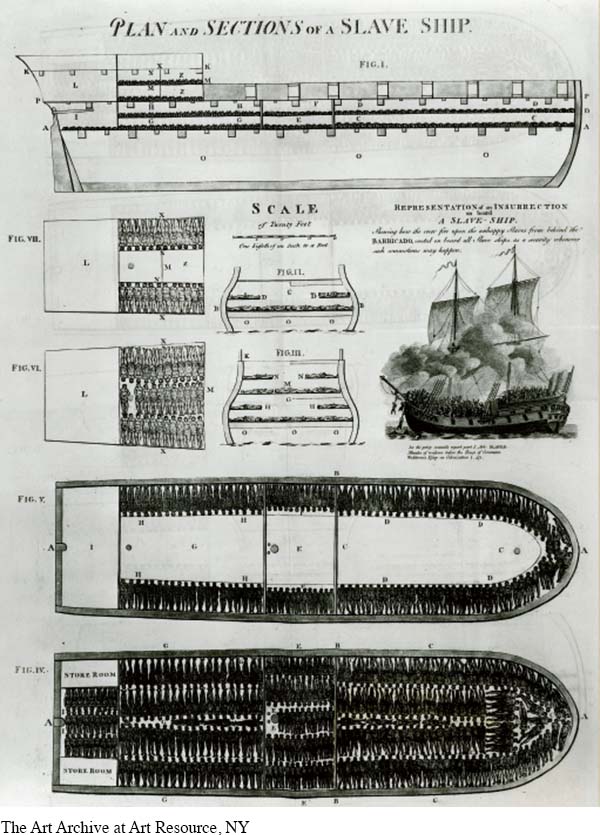Comparative Analysis The Middle Passage Documents 3.2 and 3.3
COMPARATIVE ANALYSIS
The Middle Passage
To increase their profits, slave traders built ships specifically to transport Africans. They were designed to hold as many people as possible at the least expense. The image of the slave ship Brooks vividly portrays the profit motive in transporting human cargo while The Interesting Narrative of the Life of Olaudah Equiano captures the horrific personal experience. Unusually for a slave, Equiano learned to read and write and purchased his freedom in 1766. His narrative likely combines his own experience with that of other slaves. Both documents were widely used by British abolitionists in late eighteenth-century campaigns against the slave trade.
Document 3.2
Plan of a Slave Ship, 1794

Document 3.3
The Interesting Narrative of the Life of Olaudah Equiano, 1789
At last, when the ship we were in had got in all her cargo, they made ready with many fearful noises, and we were all put under deck, so that we could not see how they managed the vessel. . . . [N]ow that the whole ship’s cargo were confined together, it became absolutely pestilential. The closeness of the place, and the heat of the climate, added to the number in the ship, which was so crowded that each had scarcely room to turn himself, almost suffocated us. This produced copious perspirations, so that the air soon became unfit for respiration, from a variety of loathsome smells, and brought on a sickness among the slaves, of which many died, thus falling victims to the improvident avarice, as I may call it, of their purchasers. This wretched situation was again aggravated by the galling of the chains, now become insupportable; and the filth of the necessary tubs, into which the children often fell, and were almost suffocated. The shrieks of the women, and the groans of the dying, rendered the whole a scene of horror almost inconceivable. Happily perhaps for myself I was soon reduced so low here that it was thought necessary to keep me almost always on deck; and from my extreme youth I was not put in fetters. . . . One day, when we had a smooth sea and moderate wind, two of my wearied countrymen who were chained together (I was near them at the time), preferring death to such a life of misery, somehow made through the nettings and jumped into the sea: immediately another quite dejected fellow, who, on account of his illness, was suffered to be out of irons, also followed their example. . . . Those of us that were the most active were in a moment put down under the deck, and there was such a noise and confusion amongst the people of the ship as I never heard before, to stop her, and get the boat out to go after the slaves. However two of the wretches were drowned, but they got the other, and afterwards flogged him unmercifully for thus attempting to prefer death to slavery.
Source: The Interesting Narrative of the Life of Olaudah Equiano, or Gustavas Vassa, The African, Written by Himself (London, 1789), 78–82.
Interpret the Evidence
What aspects and challenges of the slave trade does the plan of a slave ship emphasize?
How does the narrative of Olaudah Equiano complement and deepen our understanding of the image of the ship?
Put It in Context
What do these sources reveal about the role of the Middle Passage in transforming African captives into slaves?
Exploring American HistoriesPrinted Page 87
Chapter Timeline